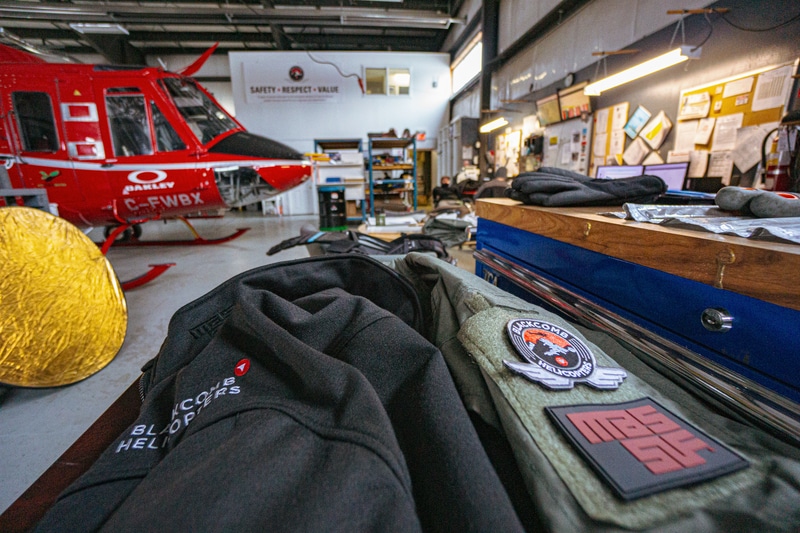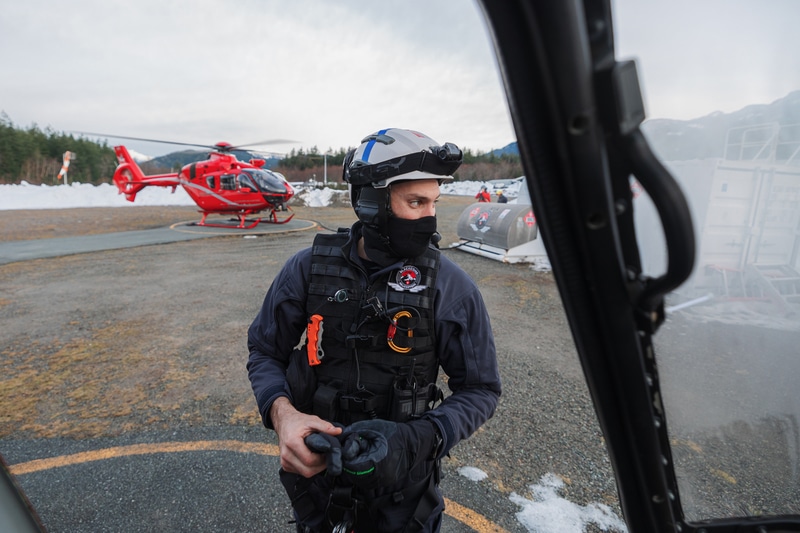Massif’s Field-Testing Manager, Chris Rogers, is a true expert in how to safely layer in high-stakes cold environments.
Wearing and properly caring for the correct next-to-skin, insulating, and outer layers can make the difference between life and death when working outside in the extreme cold.
Rogers uses the helpful acronym, C.O.L.D, as one of his tools to teach people some of his best layering practices to use in the field. This article introduces that acronym and dives into its parts.

Like most true experts in a field—Massif’s Field-Testing Manager, Chris Rogers, is able to distill large and complex ideas into clear and straightforward communication.
Rogers, who spends hundreds of days a year personally testing Massif garments in rugged conditions, shared one of these distillations in a recent conversation we had with him about layering.
What Is The Best Layering For Cold Weather
Chris Rogers uses the simple (and easy to remember) acronym, “C.O.L.D.” to explain best practices for layering in cold conditions.
Putting together the right set of layers to remain comfortable while moving or working in the cold can be intimidating. This is one of the reasons we appreciate the straightforward nature of these tips. They are as follows:
- Clean: Always keep clothing clean
- Overheating: Avoid getting too hot
- Loose: Wear clothing loose and in layers
- Dry: Keep clothing as dry as possible

Cleanliness
Cleanliness is key for a cold-weather layering system. On top of potentially creating a hygiene problem—dirty layers do not perform as well as clean ones. The performance of every layer in a system can be compromised by dirt as well as the oils from your skin.
One example of this is that dirt and oil clog up the tiny pores built into breathable clothing which will cause it to hold on to moisture and make a cold weather kit dangerously wet.
Overheating
Overheating is one of the most common mistakes that people make when working in extreme cold. If you wear too many layers, or layers that are too thick for your activity, you will overheat.
That overheating will likely lead to sweat.
Sweat can make a person hypothermic quickly when they are spending an extended period in a cold environment. Overheating looks different to each individual, but a good rule of thumb is to dress in such a way that you start an activity in which you will be moving around a lot on the cold side.
Your body will heat you up as you move. If you start out warm you are likely to overheat.
Loose
Loose clothing can deliver a double bonus of helping maintain dryness and warmth. Loose base layers allow airflow to help move potentially dangerous moisture off the skin.
The space between layers and skin as well as between the layers themselves can create dead space which can catch and hold on to heat. This dead space can add valuable degrees of warmth in the cold.
Dry
Dry clothes are integral to a warm layering system. Keeping clothing dry should be top of mind when spending time in the cold because moisture kills in the extreme chill.
Challenges to maintaining dry layers lie both outside a system—like from rain, snow, or the need to cross a body of water—or inside from a user’s own sweat.
Wearing high-quality waterproof or water-resistant outer layers and remaining vigilant against water entering layers is as important as making sure you don’t generate sweat from overheating.

Cold Weather Layering FAQ
How many layers do you need for cold weather?
When it comes to layering clothing for cold weather, there are three primary layers. A base layer for absorption and wicking away body sweat, a middle layer for insulation, and an outer layer for protection against the elements.
Does wearing more layers keep you warmer?
Wearing multiple layers does keep you warmer than wearing a single heavy layer. By wearing multiple layers, air is trapped between each layer acting as an insulator. As you shed layers, you reduce the amount of trapped warm air against your body.
What’s the difference between base layers and thermals?
Although both base layers and thermals give you similar results, there are subtle differences between them. The primary difference is that base layers are meant to wick away moisture and aid in keeping you dry. Thermals are primarily meant to retain heat and keep your body warm.
Wrapping It Up
The science behind these tips could create at least four individual articles. The utility of the above acronym lies in its simplicity, so we kept the focus dialed in for this post.
Follow each one of Chris’ tips and you will hedge your bets against getting dangerously cold while working in the field.
While it reads simply on the page, staying warm and dry in the cold could end up saving your life.
READ NEXT – Berry Amendment Compliant | The Key to Unlocking Government Contracts






Leave a Reply
Your email address will not be published. Required fields are marked *